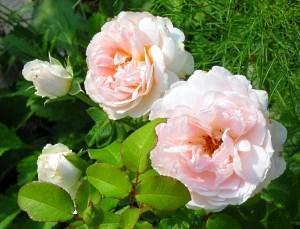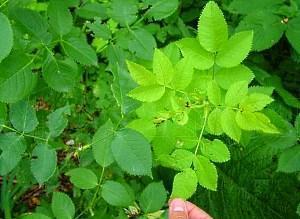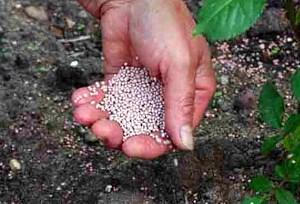Why the rose does not bloom - the main mistakes of florists
 Sometimes even experienced flower growers find it difficult to say why a rose does not bloom. Knowledge of the basic rules of caring for a beautiful flower will allow you to enjoy its splendor of colors and delicious aroma.
Sometimes even experienced flower growers find it difficult to say why a rose does not bloom. Knowledge of the basic rules of caring for a beautiful flower will allow you to enjoy its splendor of colors and delicious aroma.
When breeding roses, you need to be prepared for the fact that theoretical recommendations from specialists and the real situation in practice may have some discrepancies between themselves. Therefore, even experienced flower growers find it very difficult to determine why a rose does not bloom. The reason for the lack of buds on the bush can be both insufficient air humidity, impurities in the soil, the composition of local water, and insufficient knowledge of the basics of caring for this beautiful flower. Let's analyze the main mistakes of florists. Read about ground cover roses!
The rose does not bloom: the wildness of the bush

Soil quality
Often, a rose does not bloom due to an unsuitable soil structure or improper processing. To prevent this from happening, you should not plant it in dense, heavy soil. To obtain a lighter composition, you can add sand under the bush and gently loosen it to a depth of 5-7 cm.
Fertilization
The reason why a rose does not bloom on the site may be a shortage or excess of fertilizers applied to the soil. The main sign of excess nitrogen fertilization is the active upward growth of lush foliage without the formation of buds. The situation can be corrected by applying phosphorus-potassium fertilizer or ash.
The rose menu should include feeding of a weak concentration from an infusion of liquid organic matter or mineral fertilizers. Nutrient mixtures are applied alternately, alternating them every two weeks.
 During the period when buds appear on the bush, an infusion of wood ash can be served as a dessert (for 1 liter of oil, 1 tsp of ash), which will provide the plant with potassium. Read also about wrinkled rose!
During the period when buds appear on the bush, an infusion of wood ash can be served as a dessert (for 1 liter of oil, 1 tsp of ash), which will provide the plant with potassium. Read also about wrinkled rose!
Pruning a rose bush
The purpose of pruning a bush is to rejuvenate it, thereby increasing the abundance of flowering. The event is held every spring, thereby ridding the plant of weak, sick and unproductive shoots, and the rest to receive impulses for further development.
First of all, when pruning, all weak, sick branches damaged by frosts and diseases are removed. Further, shoots are cut, which are directed into the bush.
This will allow airing the inside of the rose and relieve it from possible accumulation of pests and fungal diseases.
Further, all unproductive shoots are removed, which include branches older than 3 years. They are easily identified by their highly lignified trunk and dark color. It is on such branches that in most cases buds do not appear, since their vessels have lost their elasticity and are completely clogged with salts. The remaining shoots are shortened according to the variety of the rose.Pruning can be done up to 3-4 buds (short), 5-7 buds (moderate) and up to 8 buds (weak).
Wintering rose bush
 Also, the rose does not bloom as a result of improper wintering. To avoid freezing and exposure to moisture, before the onset of cold weather, the rose bush should be covered with rotted peat, covered with protective material or fallen leaves. Also, experienced gardeners make special cones from expanded polystyrene and cover the plants with them.
Also, the rose does not bloom as a result of improper wintering. To avoid freezing and exposure to moisture, before the onset of cold weather, the rose bush should be covered with rotted peat, covered with protective material or fallen leaves. Also, experienced gardeners make special cones from expanded polystyrene and cover the plants with them.
In addition to the above reasons, when choosing a variety, pay attention to its features. Since the reason why the rose does not bloom may be that the conditions of your site do not match for its full development.
There is something in this. I will know, thank you for the information.